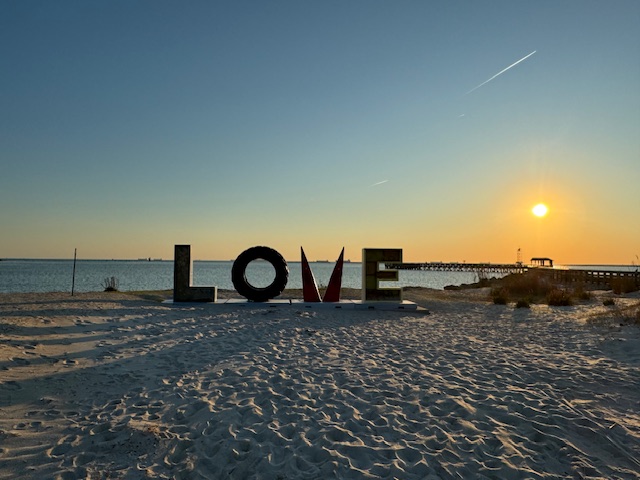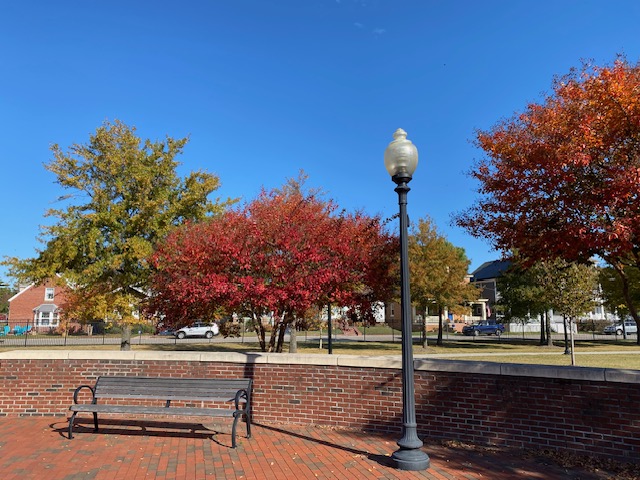Modernization and Global Outreach (1990s-2010s)
With the turn of the millennium, the Rotary Club of Cape Charles embraced technological advancements and innovative approaches to service. It chartered its third Club by helping organize the Melfa Rotary Club in 1993. Global initiatives took center stage, as the club participated in Rotary International projects, contributing to eradicating diseases, promoting literacy, and facilitating clean water access in distant corners of the world.
At its 75th Anniversary dinner meeting in 1999, aboard the Spirit of Norfolk sailing on
Chesapeake Bay, it recognized ten members as new PHFs. Paul Harris Fellows are members who have contributed $1000 to the Rotary Foundation, the charitable arm of Rotary International. The Foundation supports programs globally such as Polio Plus, which was launched by Rotary International in 1985 and aimed at eradicating polio globally. This period marked a chapter of impactful change beyond local borders as members generously supported the Rotary Foundation with regular fundraising efforts such as participation in the purple Pinkie program and the Gift
Giving Tuesdays program.
The club’s charter did not specifically mention race in its criteria for membership (it did specify males), but its membership consisted exclusively of white males until Rotary International issued a ruling in 1982 saying it would revoke a Club’s Charter if it refused to accept African American members. This was after a protest called national attention to a club in NC which voted to continue its 1913 charter of specifically admitting only white males to its membership. In 1996,
Rotary Club of Cape Charles member Tommy Long sponsored Tom Godwin, who was a member of the City Council at the time, to become the first African American member of the Cape Charles Rotary Club. Tom, who remains an Active Member to this day, tells us that he tried to bring in other African Americans, but he was unsuccessful in recruiting any at the time.
He feels that in the Jim Crow era most African Americans were still distrustful and afraid to get involved with white establishments.
Women were not admitted as members of our club until after Rotary International passed legislation in 1987 permitting their admission--this was after the US Supreme Court had ruled in March 1987 that Rotary could not exclude female members. The club first admitted Dawn Goldstein, the Eastern Shore School Superintendent, and shortly after they elected her as their first female President in 1993-1994. Member Mark Clarke recalls that Dawn was blackballed at first-- some members were just too uncomfortable with her presence. However, she was an assertive woman, and she held an important position as Superintendent of Schools on the Eastern Shore, so she subsequently prevailed, paving an easier way for other women. Norma Spencer
was admitted later and became President in 2001-2002. Cela Burge, who was President in 2003- 2004, recalls that for a long time it was just the three of them who were female members until Hollye Carpenter joined and subsequently became President in 2005-2006, as did Beverly Harper in 2006-2007 and Glenda Miller in 2007-2008. The most recent woman president was Monica Bridgeforth who served in 2015-2016.
All these women brought new energy into the club and made it more inclusive of all members from different backgrounds and occupations. They also tried to bring in younger members, including Wayne Bell who was admitted and later became President in 2008-2009. Wayne was a young, accomplished African American who was another excellent addition to the club. After him other African Americans joined, mostly brought in by Bill Payne, who has been a very active member and has served three terms as our President, in 2018, 2021 and 2022.
Bill Payne continues to be involved in many Rotary projects, often almost single handedly maintaining long-term Club projects such as the holiday Salvation Army bell ringing, the local Boy’s and Girl’s Clubs, the Rotaract Clubs, the New Roots Youth Garden Initiative, the annual Backpack and School Supply drive, the Dictionary Program for all 3rd Graders in our county, etc. After Bill became a member, several other African Americans joined the Club, including Robert Church, Diane Dawson, Stan Plowden, Reggie Widgeon, Jackie Chatmon, and Betty Bibbins. Tom Godwin recalls that early on he considered himself to be a token member and experienced some condescension among the older white members, but today he feels that Rotary has sincerely changed its attitude towards his race and that acceptance is based on merit and the capability and willingness to do “Service above Self” rather than skin color.
Cela recalls that the requirement of attendance at meetings was strict at one time, and members had to make up for missed meetings, even though it was difficult for many who were working full-time to make most of the weekly meetings at 12:15 pm. The practice of periodically holding meetings in the evening was started then. Cela also recalls that there was a policy of limiting membership to one member per profession, so there was one doctor, one lawyer, etc., although there were several farmers who held other important and influential positions in the community which allowed them to belong. She further recalls that the highlight of the social events were the Christmas parties held at Old Castle, the home of the Hubbards at Savage Neck. Cela recalls that Cliff Thibadeux sponsored her, having badgered her for a long time until he wore her out and she finally relented. She also recalls that she was one of the younger members, along with Mark Clark and Ralph Dodd, and that they felt surrounded by a bunch of old white guys who liked to socialize with each other and who called themselves the “Eat, Play and Burp Club.”
It is noteworthy, that among the service projects initiated during Cela Burge’s presidency, the Cape Charles Rotary Club, along with the other Eastern Shore Rotary Clubs, helped to raise funds to establish the Shore Cancer Center, the first such center on The Shore.
For a few years, the Cape Charles Club was mostly a tight group of older white males, who were prominent and influential members of the community, which engaged itself in mostly local projects, supporting them financially but not actually becoming actively involved.
This changed when it engaged in the project helping New Roots Youth Garden, which was initiated by the club during John Burdiss’ first term as President in 2011. In fact, our Rotary District recognized this as a community project worthy of a District Grant. This transformed a blighted area of town into a beautiful garden which has become a laboratory for youth to learn hands-on about plants and growing vegetables as well as about ecology and climate change. The club continues to be involved in the garden by donating money and encouraging members to volunteer to help our youth from spring planting until harvest. In 2018 the 3 Eastern Shore clubs
(Onancock. Exmore, and Cape Charles) presented to New Roots another District Grant check for $12,000, to help with refurbishing the plant stand, replacing the fencing, and installing concrete slabs around the farmstand. The presentation ceremony was presided over by District 7600 area Governor Susan Zachensky Walthall and Bill Murphy, then Area Asst. Governor and a former
President of the Cape Charles Rotary Club.
Another notable service the Cape Charles Club began to provide was its sponsorship of public forums for candidates running for public office in Cape Charles. This began in May 2014, and it has continued for every election since then, thereby providing all local voters the chance to get to know the candidates for Mayor and the Town Council. The club secures the venue, contacts each candidate to get their commitment to attend, plans the event providing the structure of the schedule and a neutral moderator, and supplies a few questions while providing an opportunity
for members of the audience to submit their own.
The year 2014 was also notable when it received its first EREY (Every Rotarian Every Year) Award from the District (this is earned by a club in which every member contributes at least $100 to the Rotary Foundation that year). The Club has earned this award yearly since then. The club also earned the Presidential Citation Award with Distinction (given to a club which has fulfilled a series of the requirements including participation in numerous local projects) and Paul Strong received the Outstanding President Award, given to only 10 Presidents in our Rotary District 7600, which has 66 local clubs. Through Paul’s presidency, the club became more
organized by adopting a number of policies and procedures which improved its structure and function.
In February 2015, primarily resulting from the efforts of Bill Payne, the club began a partnership with the Boys and Girls Club of the Eastern Shore by providing them technological support via a District Grant for purchasing new computers. We also provided mentorship to the Eastern Shore youth to help prepare them for college and/or job application. By sponsoring a career day and other workshops, and most importantly by sharing our members’ experience and knowledge with
them, we hopefully made an impact on their choices in life and their preparation for success.
Rotarians Bill Murphy and Bill Payne also sought to energize and inspire young leaders through service and to encourage them to become responsible global citizens by organizing 2 Interact clubs on the Eastern Shore. Broadwater Academy Interact Club was chartered in 2014, and Northampton High School Interact Club started in 2018, both with Cape Charles Rotary Club’s sponsorship. Our Club still supports these Interact clubs in many ways, from supporting their attendance at RYLA (Rotary Youth Leadership Awards, which are weekend gatherings of students where they learn leadership skills) to providing them access to our members’ skills and expertise along with our club’s monetary donations to their projects.
One of the most ambitious projects launched by our Rotary club has been the Walking Tour of the Invisible History of African Americans in Cape Charles, which was proposed in 2021 and spearheaded primarily by Metty Pellicer with the help of Tom Godwin, the first Black member of our club. The Invisible History Committee, which had been appointed to develop this project, applied for a grant from the Virginia Humanities (part of the University of Virginia) and a grant in the amount of $9800 was awarded in April 2022. Members of the club had already worked hard to obtain oral histories, permanently recorded on video, from many of the descendants of
the early African American residents of Cape Charles, some of whom dated back to the town’s founding in 1886. The grant money then allowed the Committee to hire a consultant to do additional background historical research for the project and help the Committee to put together a tour consisting of 12 Black historical sites in Cape Charles along with individual histories of each site.
This tour tells the story of the separate and vibrant community of African Americans which existed in Cape Charles during the era of Jim Crow, but which has never been documented in the town’s history prior to this. By shining some light on this part of life in Cape Charles, its current residents will now know how this segment of the town’s population has contributed to the present reality of the town and our African American residents and their descendants will now know how their ancestors made an impact on their town and their current lives. This important and ongoing project is expected to continue to evolve as time passes. For more information, see
www.invizhistory.org.








